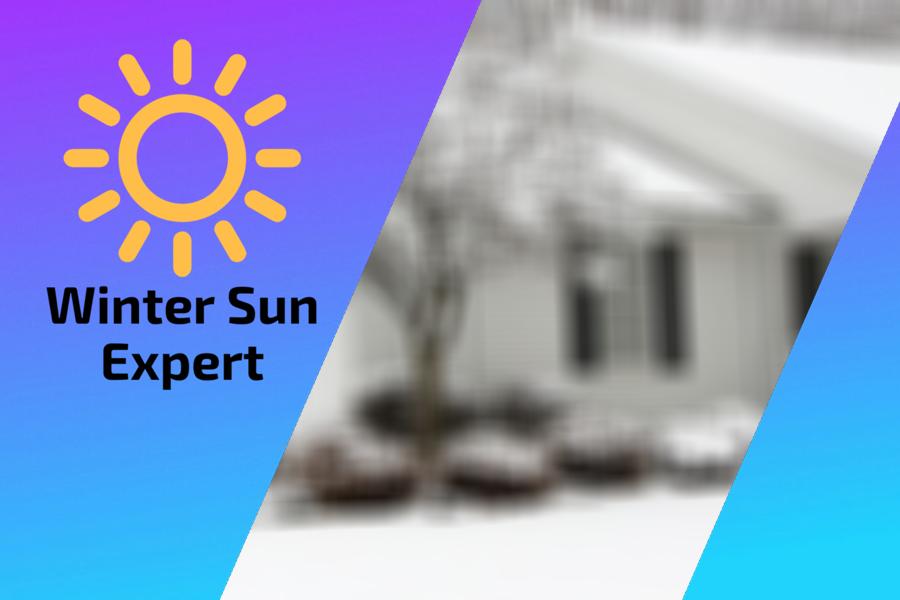Prepare your Home for the winter, with checklist
As soon as summer comes to an end and the weather gradually begins to turn chilly, it is automatically time for homeowners to start preparing their homes for the winter months ahead. Generally, the winter comes along with its cold winds, snow, and tons of below zero temperatures. Putting in even a little amount of work now to your general home maintenance can save you a lot of stress, time, and money in the long run. While preparing your house ahead for winter may not be an essential task on your to-do list right now, you must carry it out as soon as possible. Many people believe that instead of winterizing their homes in the fall, they could be enjoying the fall foliage or going apple picking. While this is not wrong, there's a reality that many people fail to face: it is impossible to procrastinate if you want your home to be fully prepared for the winter.
Prepare your Home for the winter:
- Inside your Home:
- Winterize Plumbing and Utilities
- Winterize The Heating System
- Winterize the Air Conditioning System
- Seal Doors and Windows
- Around the House:
- Check your Drainage and Gutter
- Review the Insulation
- Outside the House:
- Inspect the Roof
- Prepare your yard and Store Outdoor Accessories

There are several shortcomings that come with the winter months; cold wind, low temperatures, and snow can do a great deal of damage to your homes — well, except you take out time to prepare it before the winter eventually takes hold. Do you want to know how to prepare your home for the winter? You have come to the right place. In this article, we will cautiously look at how you can prepare your homes for the winter using a winter checklist (you can find the table below). By using this checklist, not only will you be able to winterize your Home effectively, but you'll also be able to enjoy more comfortable weather. Below is an essential checklist to help you keep everything in place.
Contents
How to Prepare your Home for the Winter
Winterizing your Home when it is already about 20 degrees Fahrenheit outdoors is no fun and can be tiring. While winterizing is essential, knowing the right thing to do comes first. On the bright side, we have compiled a checklist of several things to consider to winterize your Home right before winter.
– Inside your Home
Winterize Plumbing and Utilities
The pipes that supply water into the house are very susceptible to freezing. Once the water in the pipes freezes, it automatically expands, causing pipes to burst. This can lead to damage and costly repairs within the Home. This is the crucial reason it is vital to check out the plumbing pipes in your home continually. Here are things to do:
- Insulate exposed piping: any exposed water pipes in uninsulated spaces like a crawlspace, attic, etc., should be insulated to a minimum using foam insulating sleeves. Wrap around the pipes with electrical heating tape before you insulate.
- Insulate exterior faucets: first, turn off the water supply of the exterior faucets inside the house, then drain water from them by opening the faucets till it drains completely. You can also decide to get an insulated cover for the hose bibb. Finally, disconnect your garden hoses from the outside faucets and drain them.
- Keep your Pipes Warm: as stated earlier, frozen pipes are susceptible to damage and can cause a severe problem if care is not taken. Hence, you shouldn't turn off your heat completely when you leave the house. Keeping the temperature at around 55°F is enough to ensure that pipes stay warm enough.
Winterize The Heating System
This is probably one of the essential elements for any home in the winter. The best time to check your furnace and other appliances that supply heat is usually in the fall–no later than October. Here are a few things to investigate:
- Furnace maintenance: you can either check out the furnace by yourself or employ a service technician to help you do it. Most seasonal maintenance works are usually within the homeowner's skill range.
- Inspect and clean heating vents: Remove all obstacles around the heating vents to make sure air flows freely.
- Replace the air filter: Remove the old one and place it in a new and clean air filter. Doing this is generally easy, and it ensures that there's free airflow, and the environment is clean. All furnace have their unique requirements for air filters, ensure to follow your manufacturer's recommendations. Experts usually recommend a monthly replacement of air the filter.
- Check fuel supply: if you're using a fuel or propane furnace, ensure that you have the fuel tank topped off, and you'll be good to go.
- Check out for carbon monoxide leaks: carbon monoxide is a silent killer and must not be exposed. However, it can be easily detected with either a test badge or a battery-operated alarm. Call for professional help if you notice any irregularity to find out the cause of the leak. DO NOT put this work off; a carbon monoxide leak is hazardous.
Winterize the Air Conditioning System
One of the most abandoned yet essential components of a cooling system is the condensing unit that gets rid of the heat of summer. This component, just like others, needs a little bit of attention as winter approaches:
- Check the condensing unit for debris and clean: You can do this using a pressure washer hose with a spray-head set to the highest pressure; thoroughly clean the fan blades and condensing coils until all the debris dirt are cleared. Allow the unit to dry completely before covering it up.
- Always cover the condensing unit: Condensing unit can be easily damaged by wet leaves and debris, which may also speed up the rusting of the components. Cover the unit with a breathable waterproof cover specifically made for that purpose to get the best out of your unit.
Seal Doors and Windows
The major contributor to huge heating bills is usually a result of the infiltration of cold air from air leaks around doors and windows. The same applies to improper insulation in the walls and ceiling. If you want to reduce your heating bill, first reduce these drafts with simple weather-stripping. Here are things to pay attention to:
Windows
- Locking mechanism: Make sure the locking mechanisms on all windows are working correctly.
- Check for air leaks: find a day when it's windy outside, close your windows and check for air leaks. To fix this, use inexpensive rope caulk and press into the joints to seal the gaps around window moldings and between sliding window panes.
Doors
- Inspect: Inspect the caulking around the moldings of your door frames. If necessary, add exterior-grade caulking.
- Check for air leaks: Also, check for air leaks around doors, and if necessary, use rope caulking to seal all gaps.
– Around the House
Check your Drainage and Gutter
Ensure that the soil around your foundation is not settled so that it doesn't create an area for water to sit at your foundation. Fill in any low spot with some soil. Go around and inspect your rain gutter downspouts to make sure water is being moved away from your Home. If needed, add downspout extenders to ensure adequate movement.
The moment leaves come off the trees, it is automatically time to clean the gutters. When gutters get blocked by leaves and dirt, they begin to overflow. If this occurs, the water can flow in and around your home, causing your exterior to deteriorate pretty fast. It can even cause further deterioration of your foundation, infiltration of water into the basement, and settling of water under your porches and walkways.
Review Insulation
Some areas should be insulated to help prepare for winter. They are pretty easy to do, as well:
- Insulate the water heater: Insulate your water heater with an insulating blanket, which you can easily get at any hardware store.
- Power outlets: Insulate power outlets and switch plates with foam sealing gasket.
- Fireplace: Seal fireplaces that are not in use.
– Outside the House
Inspect the Roof
You must do a quick check on the roof of your home. You can either employ a professional to help inspect it, or you can decide to do it yourself- if you can. Just make sure you are wearing protective shoes with non-skid soles.
- Check the Shingles: Check out for missing or damaged shingles, and replace them if necessary.
- Check the chimney flashings: The flashings around chimneys and other roof projections are usually the sources of leaks. Repair them if necessary.
Prepare your yard and Store Outdoor Accessories
Finally, your yard is also one of the places you should prepare for winter. Follow the standard lawn and garden winterizing procedures, and pay particular attention to trees and shrubs, making sure they are properly pruned and watered for the winter. Next, inspect outdoor furniture and other accessories:
- Wooden deck: Seal up your wooden deck if needed, before winter. This way, it will have more resistance to winter damage.
- Patio furniture: Cover up patio furniture with plastic covers, and if possible, bring them indoors to store for the winter.
- Drain water: Drain any water accessories or fountains, unplug the pumps.
- Drain gas from machines: Drain the gas from your lawnmower machine, and store it away for the winter.
- Store machines and tools: Clean and store away all garden tools and equipment, and prepare for winter.
The Home Preparation Winter Checklist
Home Preparation Winter Checklist | |
|---|---|
Home Interior | O Check out the Plumbing and utilities O Check your home heating system O Check the Air conditioning system O Cover your windows O Close your doors O Swap beddings |
Around the House | O Check your Drainage and Gutter O Review Insulation O Shut down your pool O Inspect your Fireplace and Chimney O Prepare your lawn for winter O Seal your masonry and Cover Hard Floors |
Outside the House | O Inspect the Roof O Check the trees around your house O Cover your patio furniture O Prepare Landscape and Store Outdoor Accessories |
Final remarks
If you want to properly enjoy the winter, don't procrastinate; instead, free yourself up by taking out some time to winterize your home. This will help you avoid issues that can disturb your fun.






